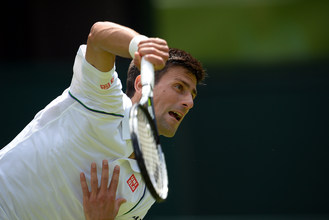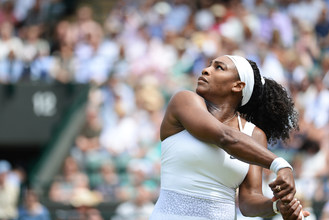Wimbledon championship, simply called Wimbledon, is the oldest and the most prestigious tennis tournament in the world. The name of the tournament is derived from Wimbledon, a suburb of London, where it has been held since 1877.
It was on July 9, 1877, that the All England Croquet and Lawn Tennis Club begins its first lawn tennis tournament at Wimbledon, then an outer-suburb of London. Twenty-one amateurs showed up to compete in the Gentlemen’s Singles tournament, the only event at the first Wimbledon. The winner was to take home a 25-guinea trophy.
Tennis has its origins in a 13th-century French handball game called jeu de paume,or “game of the palm,” from which developed an indoor racket-and-ball game called real, or “royal,” tennis. Real tennis grew into lawn tennis, which was played outside on grass and enjoyed a surge of popularity in the late 19th century.
Tennis has its origins in a 13th-century French handball game called jeu de paume,or “game of the palm,” from which developed an indoor racket-and-ball game called real, or “royal,” tennis. Real tennis grew into lawn tennis, which was played outside on grass and enjoyed a surge of popularity in the late 19th century.
The All England Club is the chosen venue for the Wimbledon tournament. Out of the four Grand Slam tennis tournaments, Wimbledon is the only one played on grass courts, the others being played on hard as well as clay courts. Wimbledon is held for a period of two weeks, starting from late June until early July. Wimbledon championship is preceded by Australian Open (played on hard court) and French Open (played on clay court). U.S. Open tournament is held after Wimbledon.
Back in 1868, the All England Club was established on four acres of meadow-land outside London. The club was originally founded to promote croquet, another lawn sport, but the growing popularity of tennis led it to incorporate tennis lawns into its facilities. In 1877, the All England Club published an announcement in the weekly sporting magazine The Field that read: “The All England Croquet and Lawn Tennis Club, Wimbledon, propose to hold a lawn tennis meeting open to all amateurs, on Monday, July 9, and following days. Entrance fee, one pound, one shilling.”
The All England Club purchased a 25-guinea trophy and drew up formal rules for tennis. It decided on a rectangular court 78 feet long by 27 feet wide; adapted the real tennis method of scoring based on a clock face—i.e., 15, 30, 40, game; established that the first to win six games wins a set; and allowed the server one fault. These decisions, largely the work of club member Dr. Henry Jones, remain part of the modern rules.
Twenty-two men registered for the tournament, but only 21 showed up on July 9 for its first day. The 11 survivors were reduced to six the next day, and then to three. Semi-finals were held on July 12, but then the tournament was suspended to leave the London sporting scene free for the Eton vs. Harrow cricket match played on Friday and Saturday. The final was scheduled for Monday, July 16, but, in what would become a common occurrence in future Wimbledon tournaments, the match was rained out.
It was rescheduled for July 19, and on that day some 200 spectators paid a shilling each to see William Marshall, a Cambridge tennis “Blue,” battle W. Spencer Gore, an Old Harrovian racket player. In a final that lasted only 48 minutes, the 27-year-old Gore dominated with his strong volleying game, crushing Marshall, 6-1, 6-2, 6-4. At the second Wimbledon in 1878, however, Gore lost his title when his net-heavy game fell prey to a innovative stroke developed by challenger Frank Hadow: the lob.
In 1884, the Lady’s Singles was introduced at Wimbledon, and Maud Watson won the first championship. That year, the national men’s doubles championship was also played at Wimbledon for the first time after several years at Oxford. Mixed doubles and women’s doubles were inaugurated in 1913. By the early 1900s, Wimbledon had graduated from all-England to all-world status, and in 1922 the All England Lawn Tennis and Croquet Club, as it was then known, moved to a large stadium on Church Road. In the 1950's, many tennis stars turned professional while Wimbledon struggled to remain an amateur tournament. However, in 1968 Wimbledon welcomed the pros and quickly regained its status as the world’s top tennis tournament.
Words above taken from here and here


Break out the strawberries and cream ... it's traditional at Wimbledon to do this, and Wimbledon's strawberry bond:
1) 142,000 portions of English strawberries are sold during the tournament
2) £1.70 - price of a punnet in 1993
3) £2.50 - price of a punnet in 2015
4) 7,000 - the litres of cream that are poured over the fruit during the course of the championships
5) 10 - minimum number of berries per punnet
This year (2015) Wimbledon takes place from 29 June to 12 July, the number one seeded mens player is Novak Djokovic and number one seeded womans player is Serena Williams, both pictured below.


2) £1.70 - price of a punnet in 1993
3) £2.50 - price of a punnet in 2015
4) 7,000 - the litres of cream that are poured over the fruit during the course of the championships
5) 10 - minimum number of berries per punnet

No comments:
Post a Comment